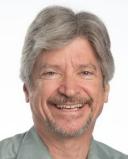Psychology
The 7 Virtues of Great Teachers
How Sidney Perloe taught his students, academically and personally.
Posted March 24, 2022 Reviewed by Tyler Woods
Key points
- Sometimes the virtues displayed by excellent teachers overlap with the virtues they display as human beings.
- Excellent teachers are, among other things, authentic, curious, humble, calm, present, playful, and wise.
- The virtues were all displayed by one of my most influential teachers.
Sidney I. Perloe, Ph.D., one of the most influential and inspiring teachers I’ve ever had, passed away recently. At his memorial service, which I was able to attend via Zoom, I heard beautiful eulogies and remembrances of Sid—as a college professor at Haverford, but more importantly as a father, grandfather, gardener, primatologist, choir member, etc. What struck me most was that the descriptions of Sid as a person in all these roles were so similar to my experience with him as a teacher during my four years at Haverford College.
There were seven virtues (personality traits, habits) that came up during the service. This list overlaps with other lists of qualities and skills of good teachers1 in the literature2. I was fortunate that Sid displayed all seven of them, and more, so consistently.
Authenticity
First, the fact that these characteristics were true of Sid as a person, as well as a teacher, showed that he was authentic. He did not have a “teaching persona”; he expressed himself as the human being he was in his interactions with his students. Teaching, for Sid, was another way to express himself and his humanity. It was also another way for him to learn.
Curiosity
This attitude is a common characteristic among intellectuals, four-year-olds, and excellent teachers. Sid was the first teacher I’d ever seen to organize his lectures around topics—and taking more than one class period to finish if need be—rather than squash information into convenient 50- or 75-minute chunks. During a meeting of a research team, I remember him saying, “I’m going to bury myself in the data this weekend.” I’d never heard anything like that before. It conveyed to me that scientific and intellectual curiosity are important, and that curiosity is not idle; it takes work. He was always learning and exploring.
Humility
One person said of Sid, “He was open to being wrong and to changing his mind.” What a perfect combination of curiosity and humility. I believe his willingness to learn from others, including his students, facilitated his attitude of respect. I’ve written elsewhere about the review session at which I referred to a classic experiment in social psychology as “stupid.” Sid had a choice at that point: He chose to embrace and join my struggle to make sense of the (psychological) world rather than to dismiss me and/or my dismissive comment.
Calmness
Sid spent time explaining that study to me: what the study was about, real-world implications and examples, how it fit with other studies. He must have explained that study 1,000 times before, to students who were quicker to understand than I, but he communicated to me that I was worth the time, regardless of whether I ever became a psychologist—or even a college graduate. A couple years later, in a senior seminar, Sid would sometimes write three pages of reactions to my two-page papers. In his quiet, deliberate, calm way he demonstrated respect and caring.
Being Present
Review sessions, class, research meetings, whatever. Didn’t matter. Sid never gave me the impression that he wanted to be anywhere else. In my naivete at the time, it didn’t strike me that he had lots of places to be and things to do that were critically important in his life. He took each of his responsibilities very seriously.
Playfulness
Sid was able to laugh at himself. The week before graduation, the psychology faculty and students gathered for presentations of our senior projects, followed by an informal gathering marking the end of our time in college and in the department. In preparation for the event, several of my fellow seniors and I went to a local toy store and bought several toy shovels—one of them was bigger than the others, and yellow. In a mock ceremony, we presented each of the faculty with “awards.” Sid was a primatologist, and we’d spent lots of time with him talking about chimps and their behavior. We gave Sid the “Golden Shovel Award for Excellence in Primate Behavior.” Sid took it in exactly the way we meant it—he understood the humor, affection, and admiration we were expressing. He also respected our first tentative foray into collegiality. I will tell you that, over the years, not all such attempts at humorous collegiality with professors have been met with such grace.
Wisdom
Simply put: Sid met me where I was—a kid who didn’t know what college was for or what I was to become. He did not appear to worry about my many deficits and shortcoming. Rather, he assumed, looked for, found, nurtured, and developed my potential and my skills. He did so by inviting me to take some next steps, in a respectful and safe environment, in my intellectual, professional, and personal development.


